There were big plans for the canoe I built in 1988. Cindy, my wife then, and I were living in Washington, D.C.; we had moved there for an internship she had been chosen for by the Library of Congress, and I eventually landed a job in the Smithsonian Institution. Before leaving our home in Seattle we had rowed the Inside Passage and even after moving to D.C., we still had a thirst for adventure. We set our sights on paddling the Missouri River from its start at Three Forks, Montana, to the confluence with the Mississippi at St. Louis, Missouri. The only chance we’d have for that 2,300-mile voyage would be before settling back to Seattle to begin careers and have a family.
For the boat we’d use for the Missouri, I was considering something like the decked lapstrake canoes used by John MacGregor in the late 1800s. In my copy of W.P. Stevens’s 1889 book, Canoe and Boat Building for Amateurs, I was drawn to his 15′ x 30″ American Cruising and Racing Canoe. It was designed as a single, so I stretched the station spacing to make it an 18′9″ tandem. The house we had rented outside of D.C. was small and the basement was only a little larger than a 20′ square. It would be a tight fit for the canoe. The beam of the canoe had to stay at 30″. The only way to get it out of the basement was through a window that had an opening scarcely 31″ wide.
I used Tom Hill’s Ultralight Boatbuilding as a guide to the glued-plywood lapstrake construction I chose over traditional methods detailed in the Stevens book. I had a handy source of materials for the strongback and molds. I was hired by the Smithsonian’s Museum of African Art as an exhibits specialist and was able to salvage birch plywood and lumber whenever we demolished the previous cases and platforms to clear a gallery for new installations. There wasn’t enough room to run the long lumber through a stationary thickness planer, so I put it on casters and let it run across the floor, propelled by the wood pushing beyond the outfeed table.
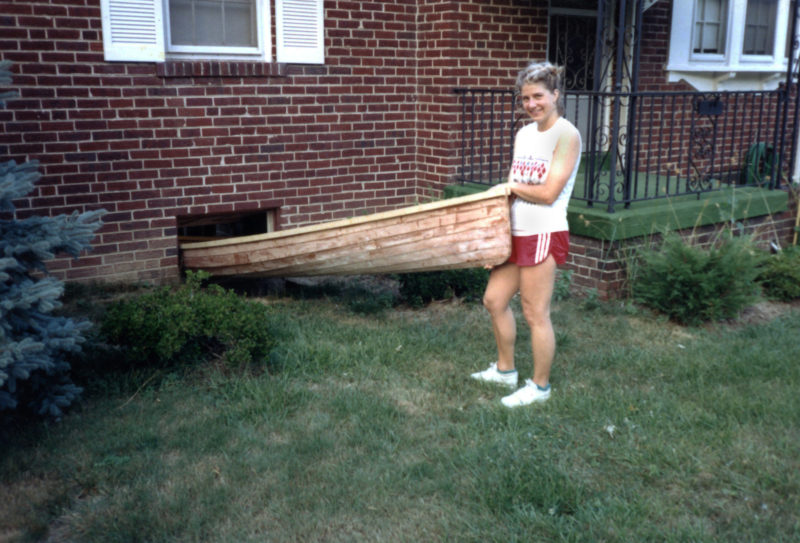
I had carefully measured the basement window frame to make sure the canoe would fit through it, but the dimension for the canoe’s beam that I used to check the opening didn’t include the outwales. I had to cut notches in the steel flanges of the window frame to provide clearance. I took this photograph when the canoe made its first outdoor appearance. The house was a rental, so before moving out I filled the notches with aluminum bar and Bondo and painted them with a faux weathered finish to blend in. On a trip to the East Coast 14 years later, I drove by the house and my little secret was still undetectable.
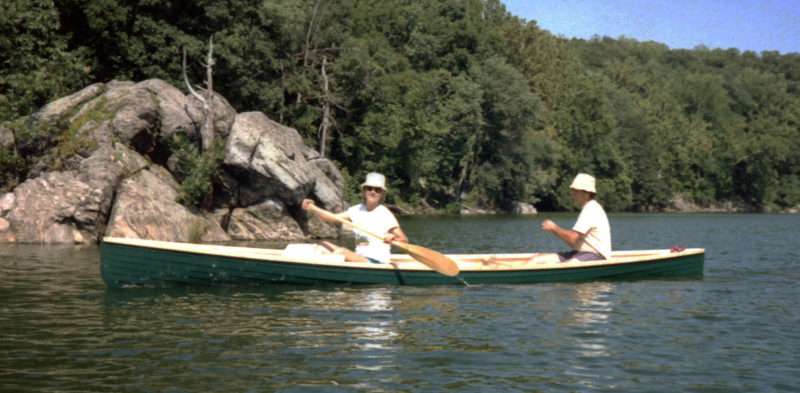
I painted the canoe before putting the decks on so we could use it during the summer of 1988. I knocked out a pair of beavertail paddles to get us on the water as soon as possible. We’d have some time to get used to paddling before the winter forced the project back into the basement to be finished.
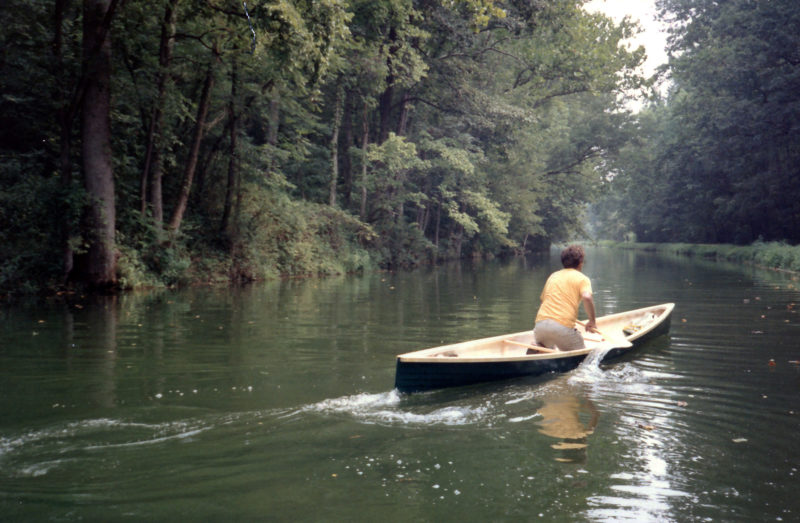
The Chesapeake and Ohio Canal connects Washington, D.C., to Cumberland, Maryland, a distance of 185 miles. Navigation on the C & O ceased in 1924, and the canal is now a national historical park and a beautiful place to paddle. I took the canoe out solo only as a lark. It was designed to track and rely on the rudder, which I hadn’t made yet, for steering.
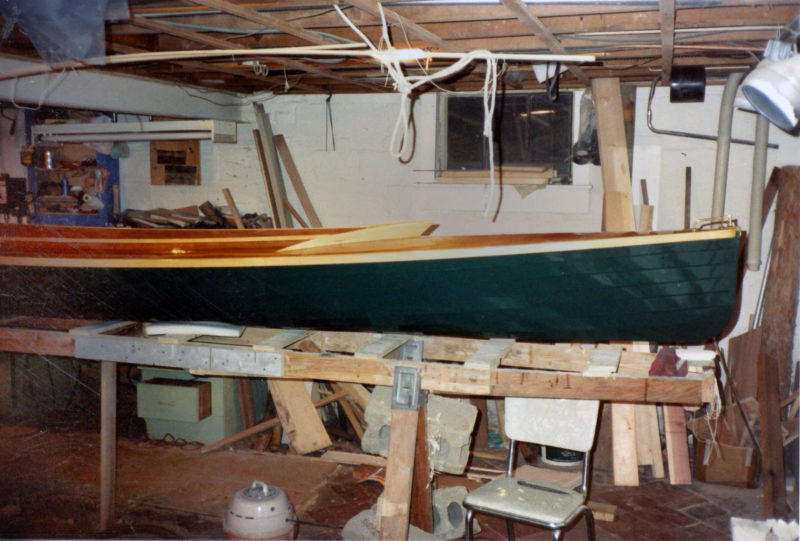
The ladder frame I built the canoe on and the molds it had supported early in the construction were made from lumber I salvaged from the Smithsonian’s National Museum of African Art. The butt plate connecting the side rails and the crosspieces, all painted with the museum designer’s favorite gray, were cut from flawless 3/4″ birch plywood that was used to build the gallery displays. The window is one of two in the basement; it is the same size as the one that the canoe had to fit through to get out of the shop.
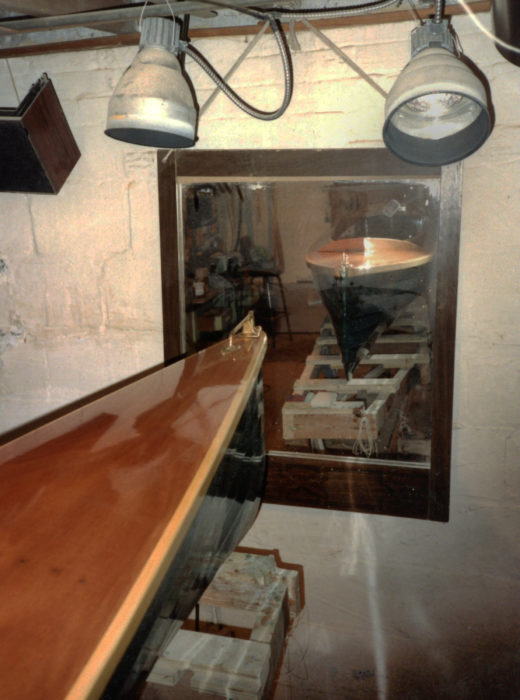
The basement didn’t leave me with any room to spare beyond the ends of the canoe, so I needed mirrors to get a view along the centerline.
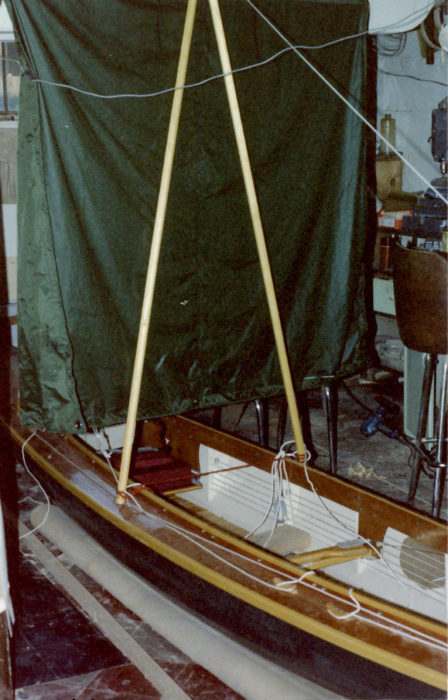
Figuring that the Missouri River’s valley would funnel winds along the river and some would be coming from astern, I made a squaresail from a coated nylon tarp and shaped three identical 6′ spars for the yard and an A-frame mast.
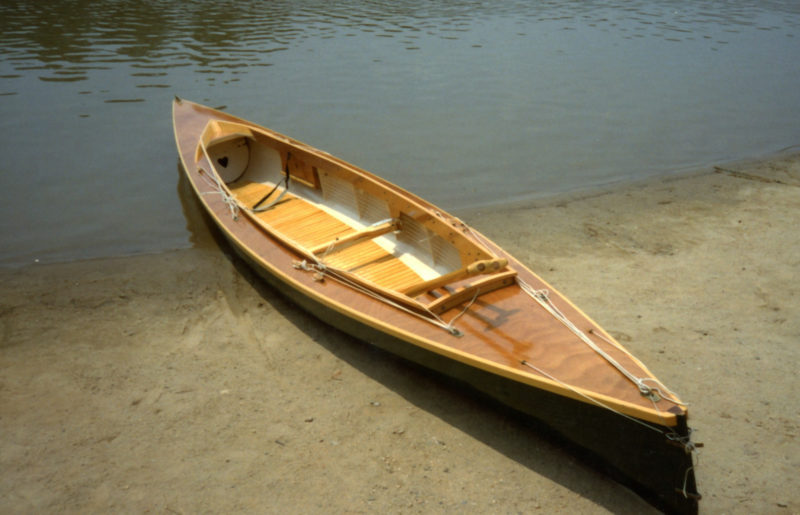
The canoe never got a formal launching or a christening and today it remains nameless. The bow footboard, seen here in the shade of the foredeck, was for Cindy and had a heart for decoration and pedals connected by cables to the rudder yoke so she too could take command of the canoe.
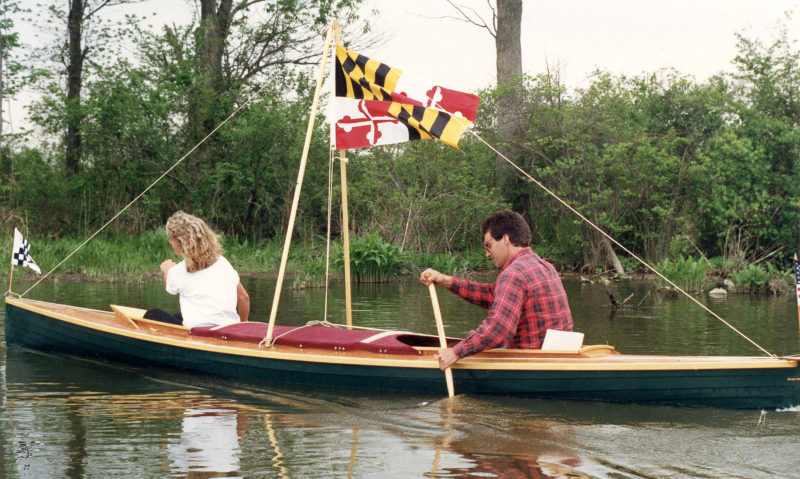
I sewed a cockpit cover in anticipation of wet weather on the Missouri. The center section is in place here; the sprayskirt pieces for the ends were too warm for summer paddling. The Maryland state flag, flying from the A-frame mast, was to show a bit of pride for our residency in Silver Spring while we were working in D.C. I don’t recall now if we were flying the colors for some special occasion. We didn’t need one; I’m fond of flags and Maryland’s is one of my favorites.
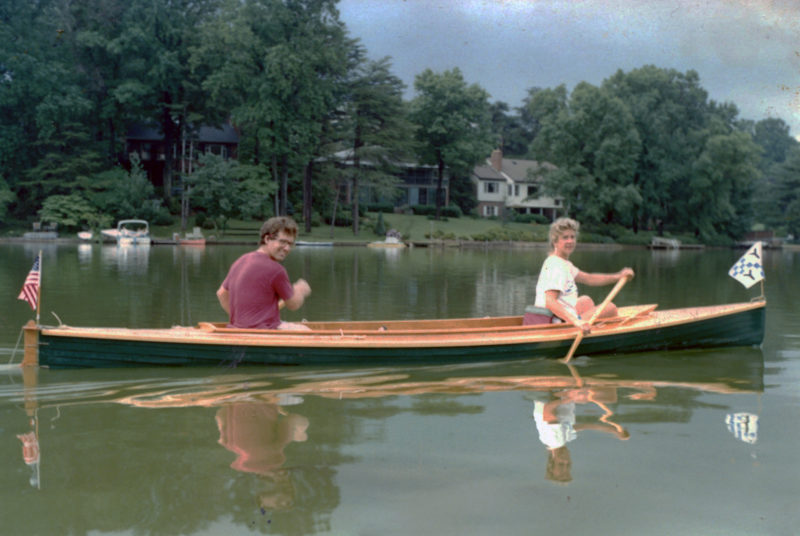
With the canoe finished, we started gathering gear for the river trip. The two bent-shaft paddles I made were light and much easier to use than the beavertails. The canoe was fast, even when we took a passenger along to simulate a 150-lb load of river-cruising gear.
We were in the midst of planning to leave D.C. for the Missouri River voyage when I got a call from the founding editors of Sea Kayaker magazine. After spending five years getting the magazine established, they were ready to move on and hand over the editorial duties. I had submitted an article that they published in the magazine’s second year, and they had remembered it as the cleanest draft they’d received. They figured that if I could tidy up my own writing, I’d be able to do the same for others, and offered me the position of editor. I had never considered being one, but I was flattered by the offer, interested in the work, and accepted the opportunity. It turned out to be the beginning of a career that has now spanned 32 years.
Taking the job meant moving back to Seattle within a couple of months and abandoning the Missouri River plans. In 1989, Cindy flew home to begin a job she had found and I left Washington with the canoe strapped to the top of our VW squareback. Passing through Montana, I took a short detour from Interstate 90 to Three Forks and parked at the confluence that creates the Missouri River. I took an empty plastic 1-liter bottle of Canada Dry lemon seltzer water from the car, dipped it into the river, and filled it. I still have that bottle.
Settled back in Seattle, we paddled the canoe only occasionally. In the fall of 1990, Cindy was pregnant with our first child, and 10 days past the due date. Eager to make something happen, we thought we’d try taking the canoe out. We launched on Lake Union and hadn’t been paddling for long when the first contractions started. We steered back to the ramp, drove home, and packed up to go to the hospital. After a long labor, our son, Nate, was born. (Three years later, with our second child, Alison, also well past her due date, we went paddling again with the same result.)
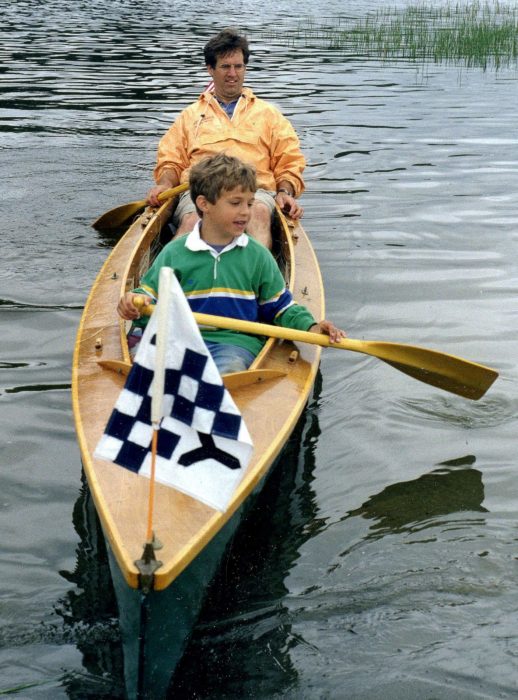
As a 10-year-old, Nate took the seat where, on a September afternoon in 1990, the day before he was born, he decided he was done with gestation and ready for the world. At the bow is the family house flag first designed and first flown by my 3rd great-grandfather and Nate’s 4th great-grandfather, Charles Cunningham, around 1822. Nate now has a house flag of his own for BONZO, the Escargot canal boat he built.
On Father’s Day this past June, Nate and I decided to spend the afternoon together and loaded the canoe on my car. We launched at a park on the Sammamish Slough, the sluggish meandering waterway that connects Lake Sammamish to Lake Washington. I took my seat in the stern and Nate sat forward, in the seat that 30 years ago stirred him to come into this world. It had been many years since he and I had paddled together but we instantly fell into our cadence, a brisk pace of precisely 60 strokes per minute (we timed it). Nate’s broad back, rounded with thick muscle, gave his strokes power; twin silvery vortices audibly pulled air into the water as they slipped by me. When I called “Hut!” to switch sides with the paddles, he hit the next stroke on the other side, without delay, right on cadence. I gave him the GPS and he checked our speed. We were making 5.2 knots. Upstream.
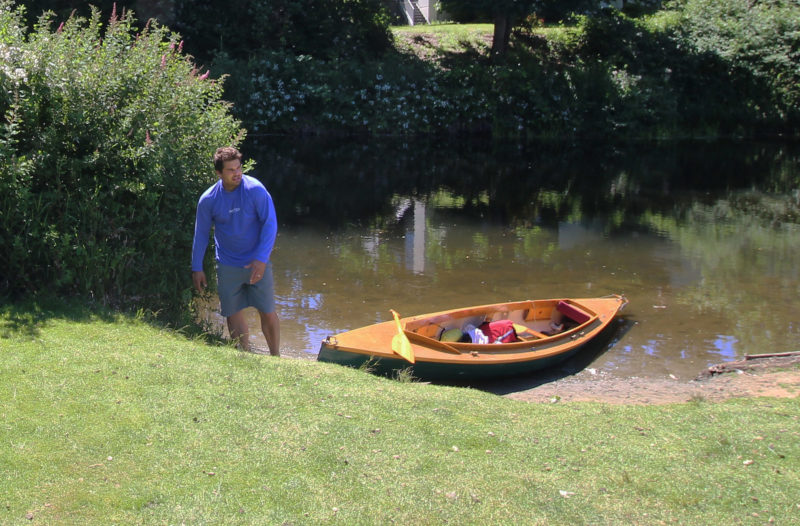
Two miles upstream from the launch, Nate and I stopped for lunch at the park in Woodinville. I couldn’t help but see myself—at least a younger version—in him. He has the same rounded shoulders and when his arms are relaxed, his thumbs point inward rather than forward. A physical therapist told him that the rotation is the result of tight chest muscles. From his teen years on, Nate and I have had a pushup rivalry, and both of us have occasionally been able to do 100 in a two-minute time limit. My thumbs point toward each other, too.
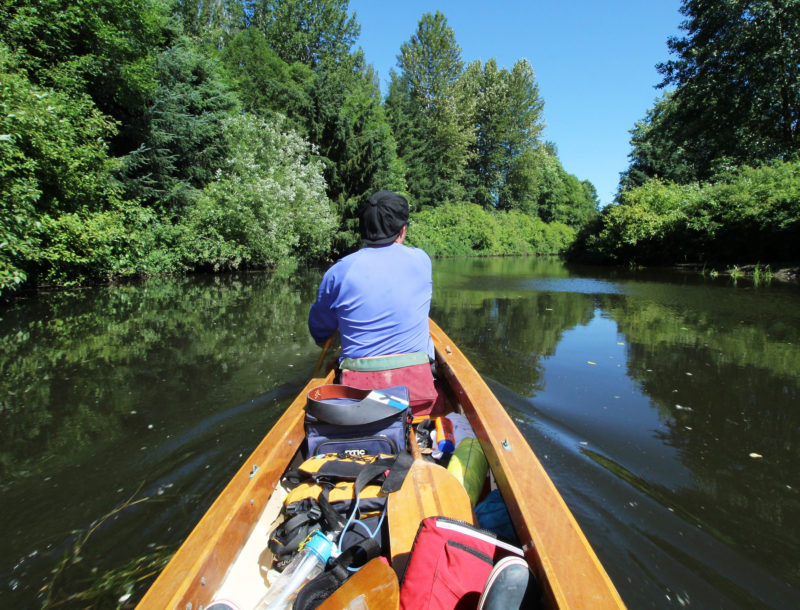
A popular bicycle path parallels the slough for almost all of its 14-mile length. From the path, you see a landscape that is a combination of farms and light industry, but from the slough none of that is visible. I could easily imagine we were paddling the pastoral canals of England or France.
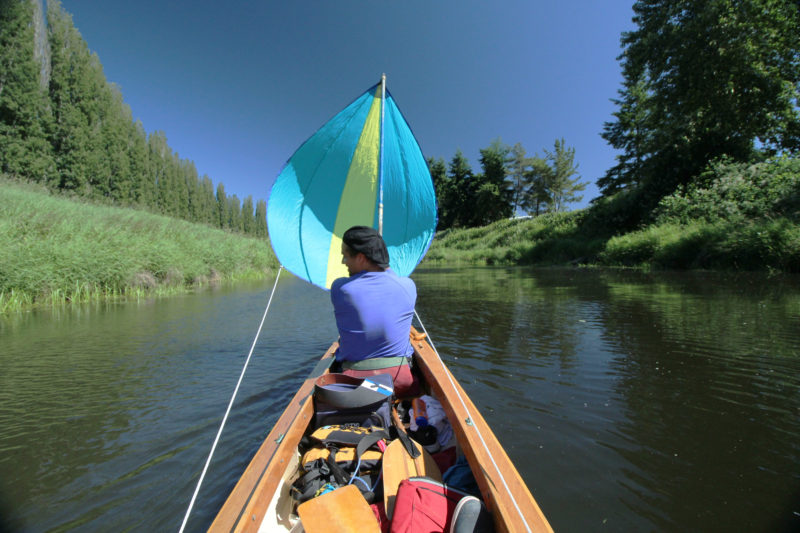
There wasn’t much wind in the slough, but we took advantage of what little there was. During one good puff, when the canoe surged ahead, Nate said in a high, breathy voice, “You’re doing it, Peter. You’re doing it.” It’s a line from the Peter Pan-inspired movie Hook. It was a favorite when Nate and his sister, Alison, were young and we played the VHS tape endlessly. “You’re doing it” is now one of many movie catchphrases all three of us use when in each other’s company.
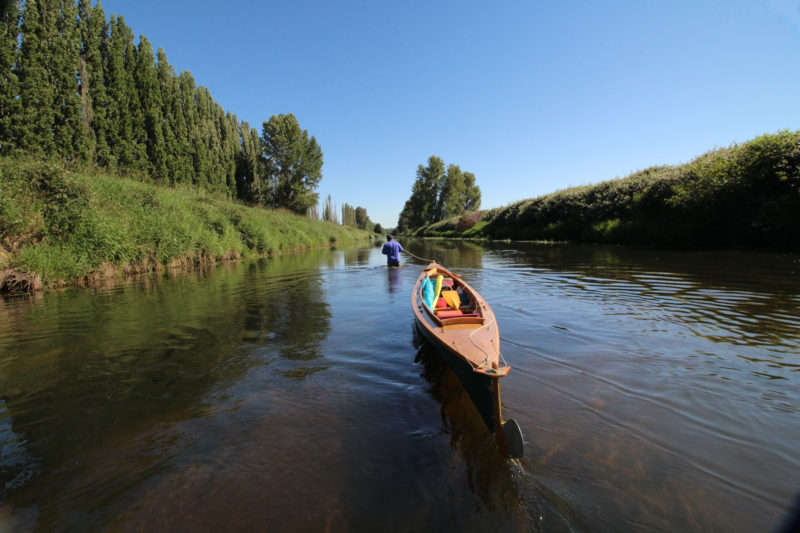
While there was more than enough water for us to paddle this stretch of the slough, the sandy bottom looked inviting, so we slipped over the side to wade upstream and cool off.
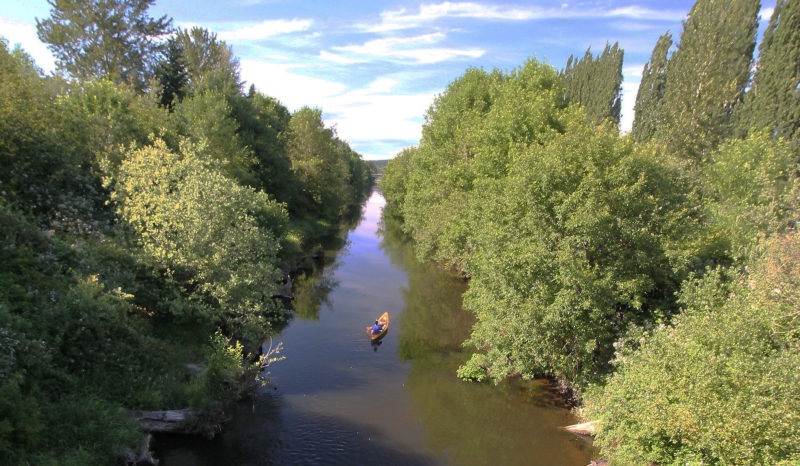
Nate and I paddled a little more than 6 miles upstream before turning around to head back to the launch site. We paddled one long straight stretch like this at a fast clip without stopping. When I started to feel my shoulders burn, I told Nate, “Enough of that.” He said he was beginning to tire too and added “I like to get to the point where it hurts and then keep going.” When I was his age, 30, I was training for triathlons on the very bike path we were paddling next to, pushing hard and using the pain as my cue to pedal even harder. Nate expressed what I would have said about myself 37 years ago.
If I had known while I was building the canoe that it would never make the Missouri River voyage it was meant for and that my marriage would eventually come to a sad end, I might not have had the heart to finish it. But if a glimpse into the future had penetrated through to a Sunday afternoon paddling with my son, nothing could have stopped me from having the canoe ready and waiting for that day.![]()

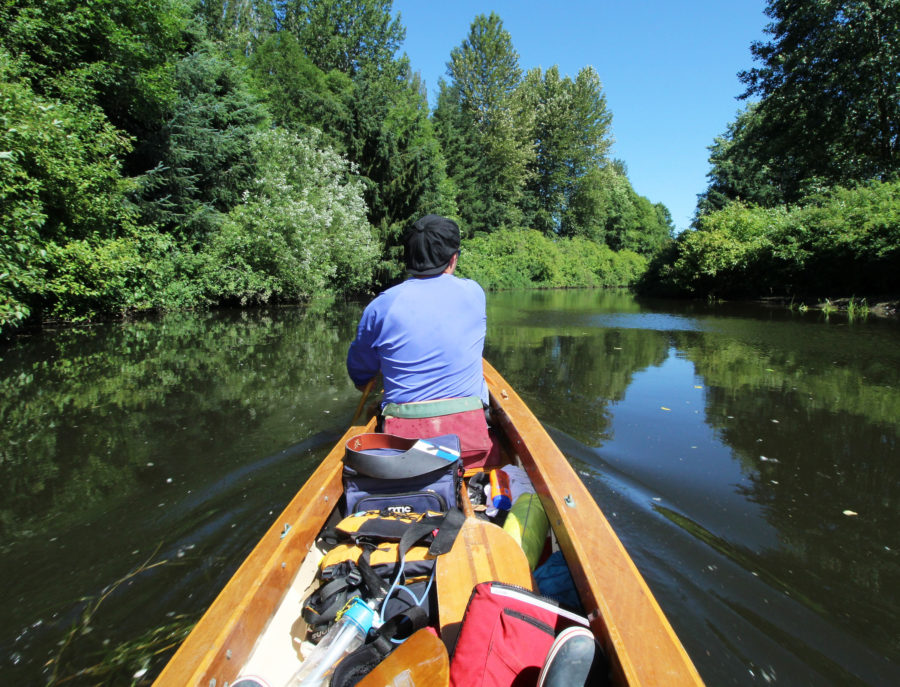
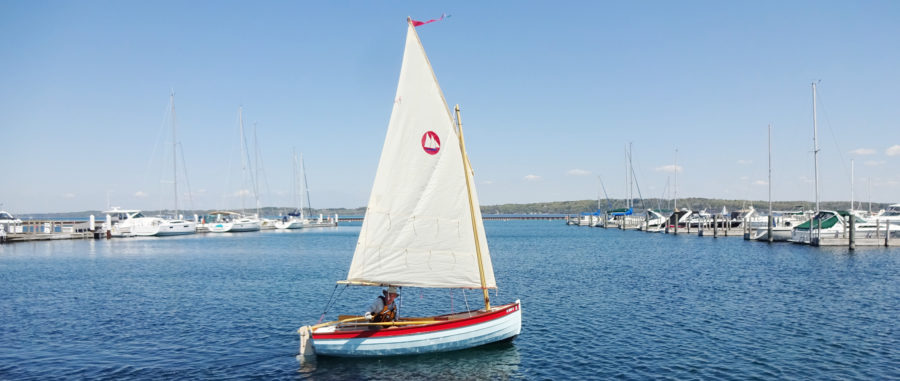
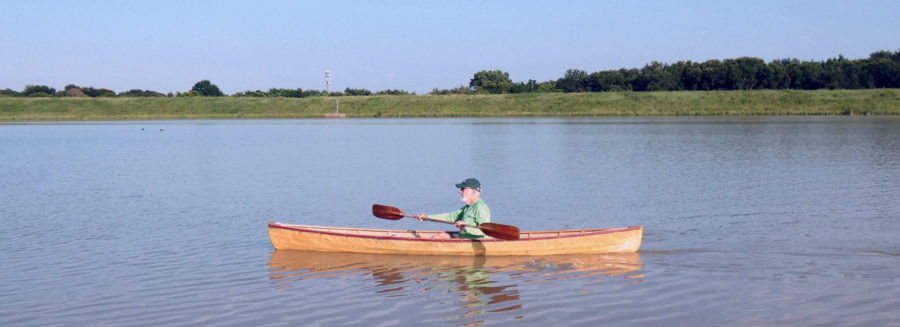
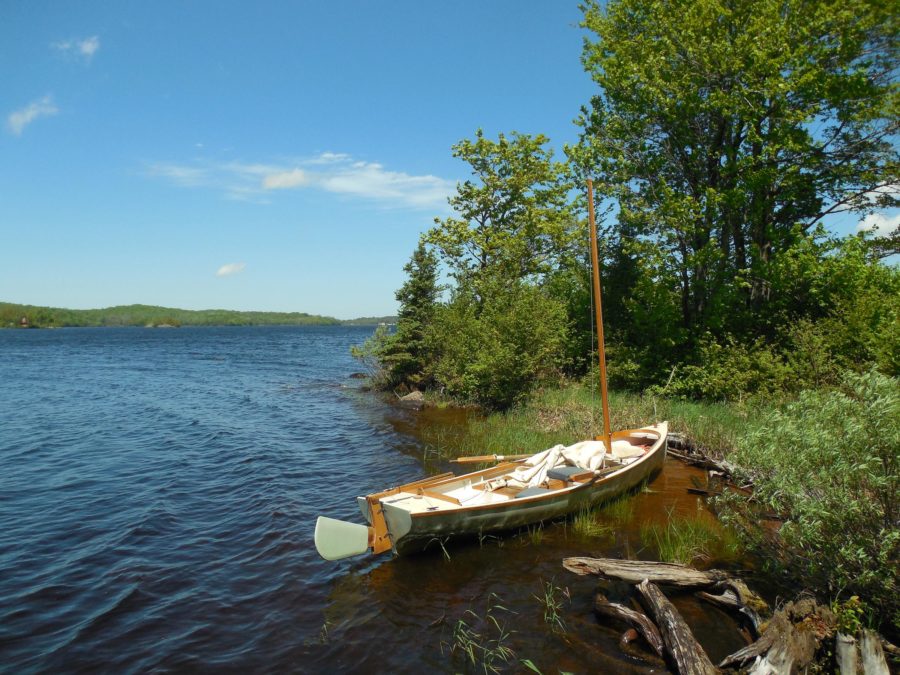
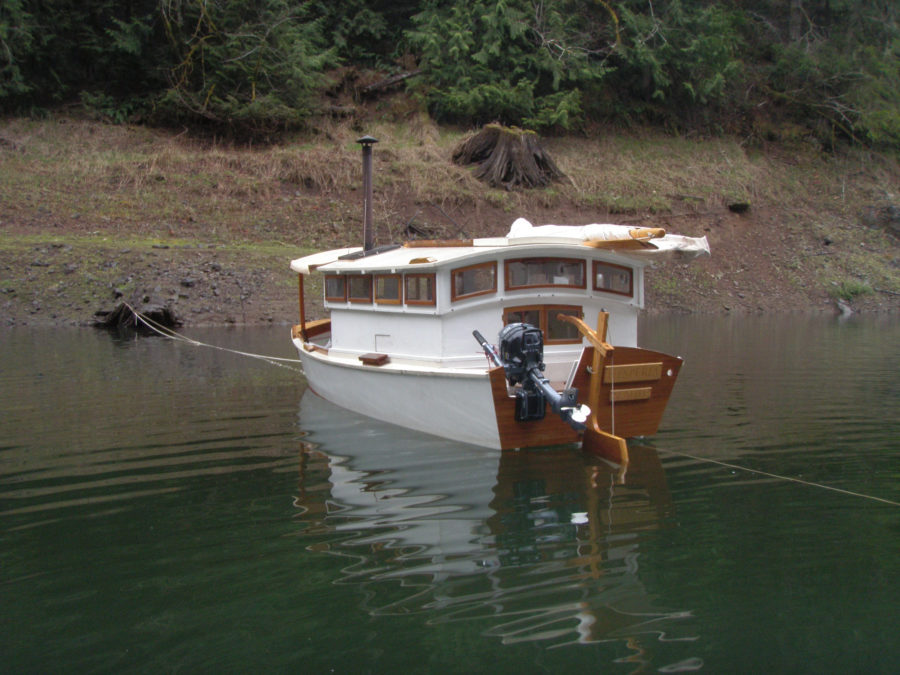
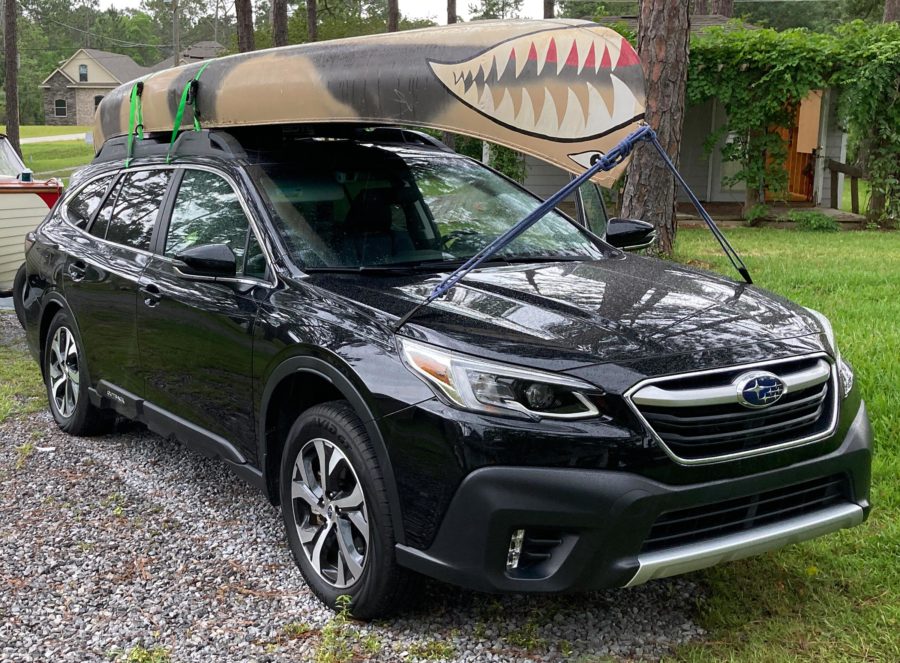
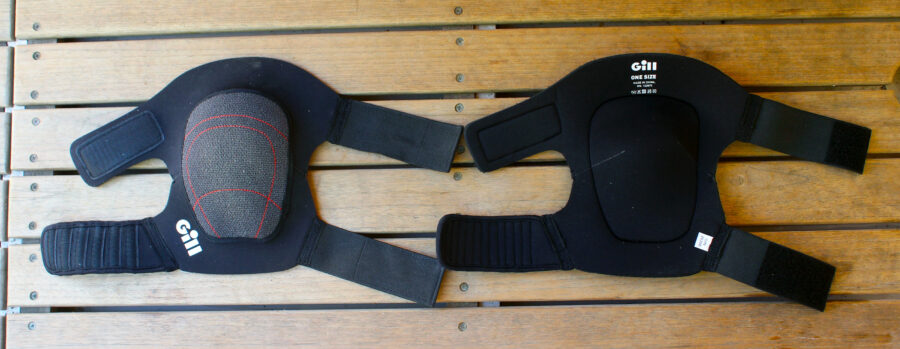
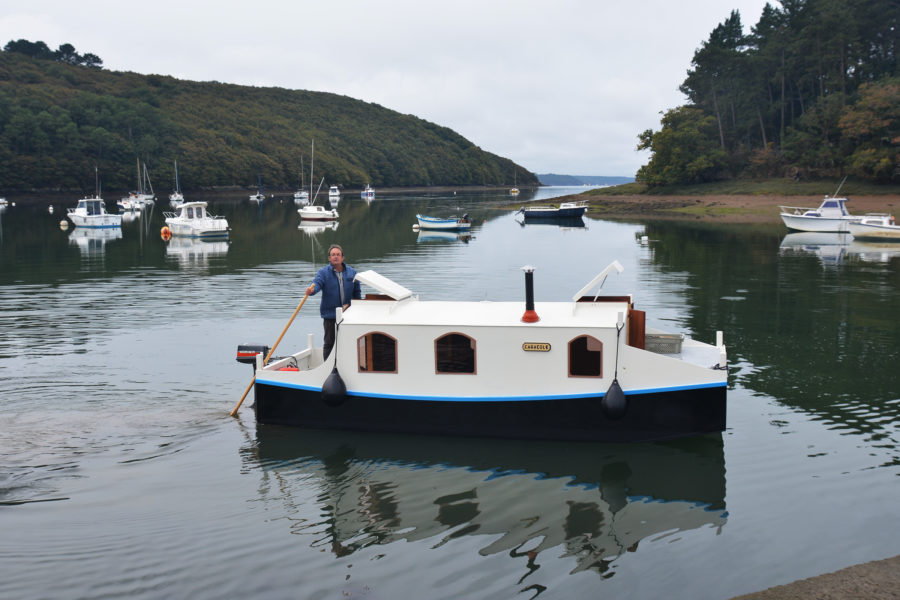
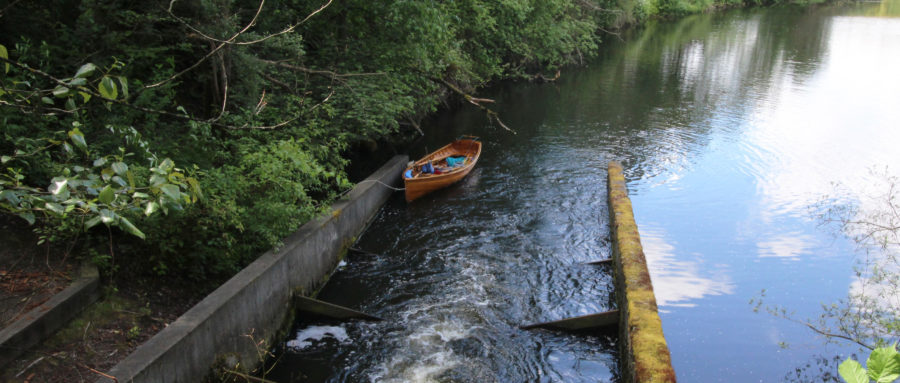
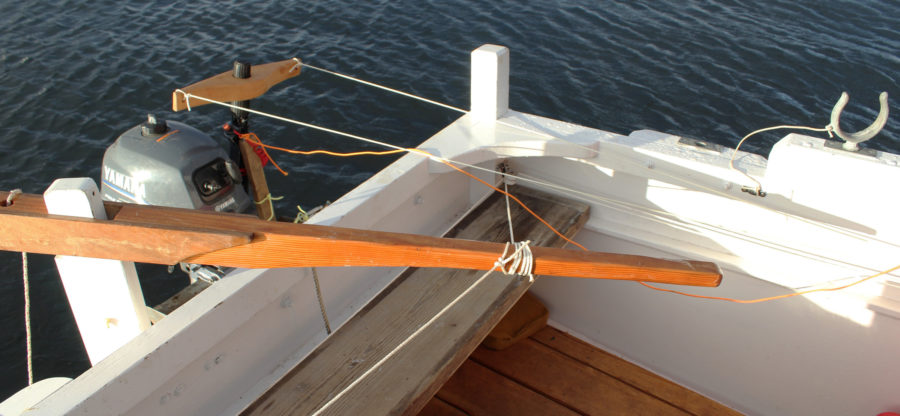
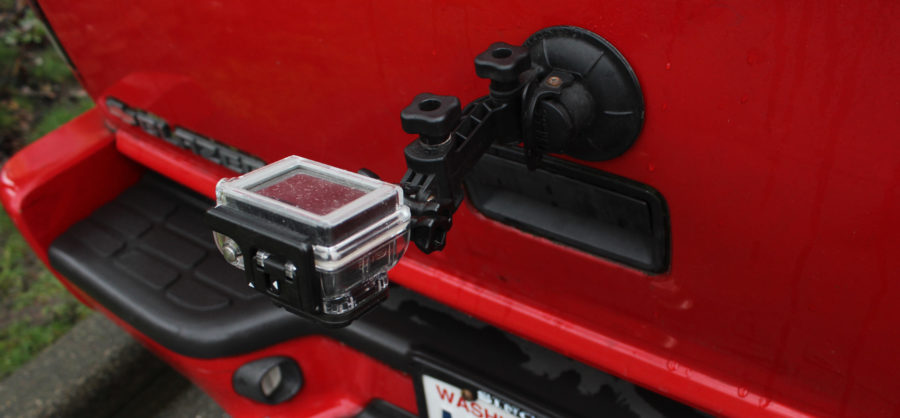

Chris,
This is a great story about the legacy of boats, which can bind us to the past and bring us to the present through the twists and turns of life.
I recognize the scenery of the Sammamish Slough, from when I was being towed back to the launch site back in May. ;o)
The greatest impact of this story is the last paragraph. Having been married for 42 years, I was touched by your comment about your marriage. And having a son, I would also have built the canoe in preparation.
A beautiful story, Chris, and a beautiful boat. Those of us who have the bonds of water, boats, history, and loved ones are truly blessed. Paddle on, you and your family…
Beautiful
My dad and I built my first boat together 30 years ago. He’s gone now and I’m using some of his tools to build a boat for future adventures with my now two-year-old son.
I built a canoe in 1976 for which I had to first measure the kitchen window that it would need to pass through to exit our home. Man! A 30-inch width for a 2300-mile trip down the Missouri; that would be an adventure.
Lovely story. We lived near the slough for 12 years and paddled a blue Ranger canoe that launched a serious boat habit.
Far and away the best of the many stories I’ve read in the world of Small Boats Magazine. Clean and elegant, touching on many levels: marriage, children, small boats, and water—even flags.
Thanks
The Father’s Day editorial was great. So many great memories.
It is a tough business to build a boat in tight quarters. I usually build up to a point of finishing carrying my boat up the stairs and out the back door from my basement shop. There are 16 or so feet between my neighbor’s house and our back door. This wouldn’t be so bad except my neighbor has planted Barberry bushes along our property lines. So, once we reach our little back porch at the top of the stairs, we need to lift the boat vertical as to avoid the Barberry thorns. Then it is off to the rack in our garage and final finishing and graphics in my driveway.
Your comment about the wind along the Missouri River is absolutely true. I’ve paddled large stretches along South Dakota, Nebraska, Iowa, and Missouri. Through sections of the Missouri near Omaha the prevailing south summer winds can kick up to 25-30 MPH. Sometimes, if you stop paddling you will get blown upstream; a canoe is not the best vessel to paddle on the rivers here in the Midwest. Even kayaks can be turned around by the wind and the vortices from the wing dams.
I’m glad I switched over to Small Boats. It fits more in my area of designing and building.
Again, the Father’s Day editorial was very good.
Thanks
Wonderful account. Filled with plenty of warmth and heart…and wood.
Poignant and beautiful, so thank you. I live in hope of enlisting my adult kids in a suitable boat project one day, but having crossed the Pacific with them in a 32′ sloop when they were small (2 and 4) they haven’t developed a love of the water like their Dad. Que sera sera!
Your story tugs at my heart. Family is important, enjoy it every day.